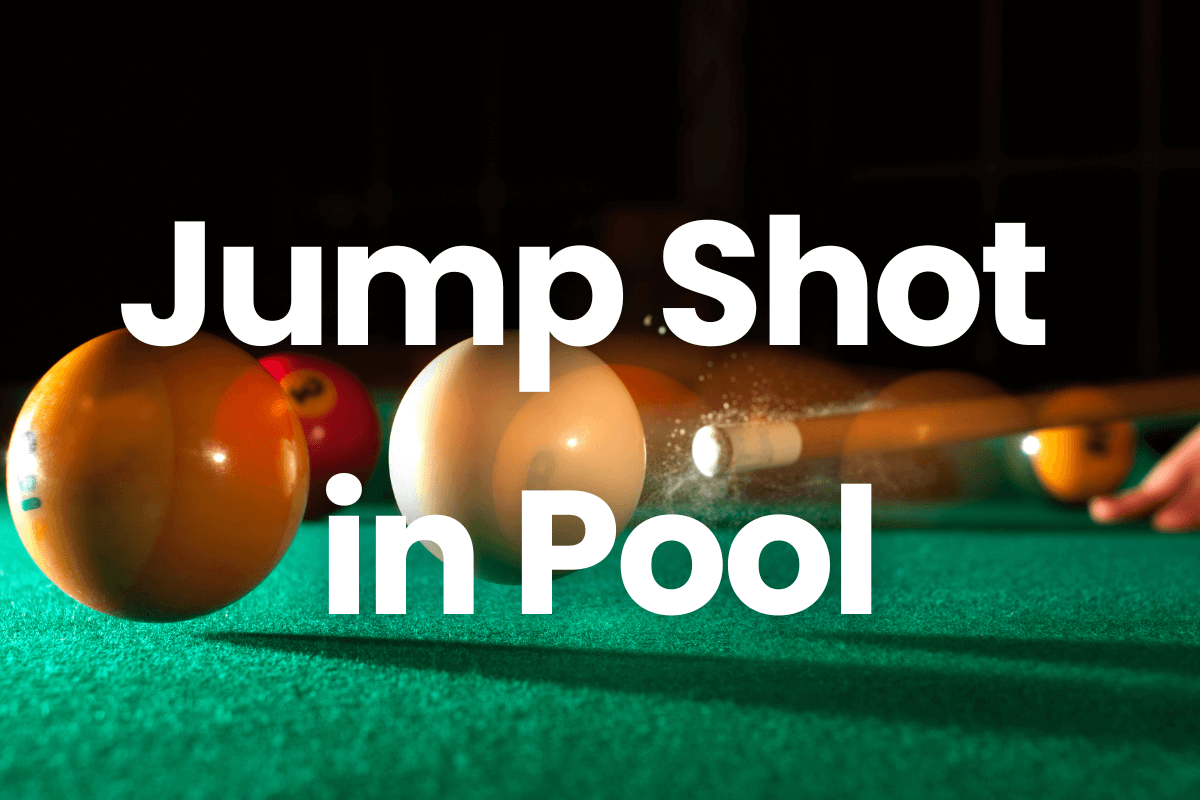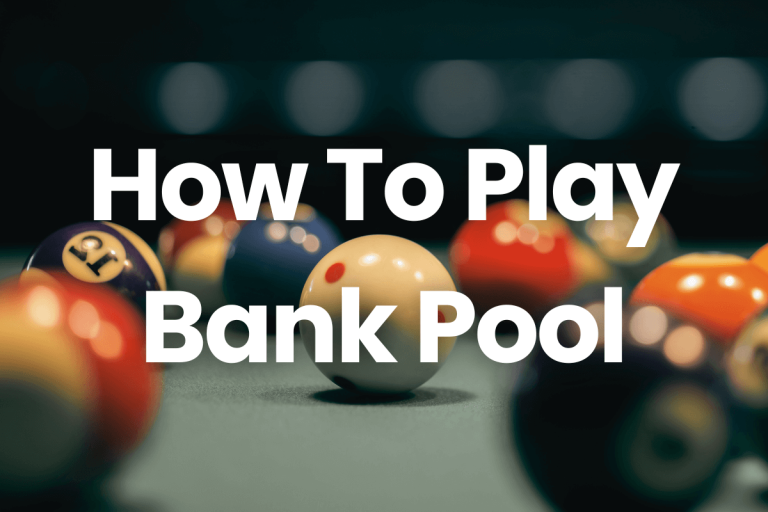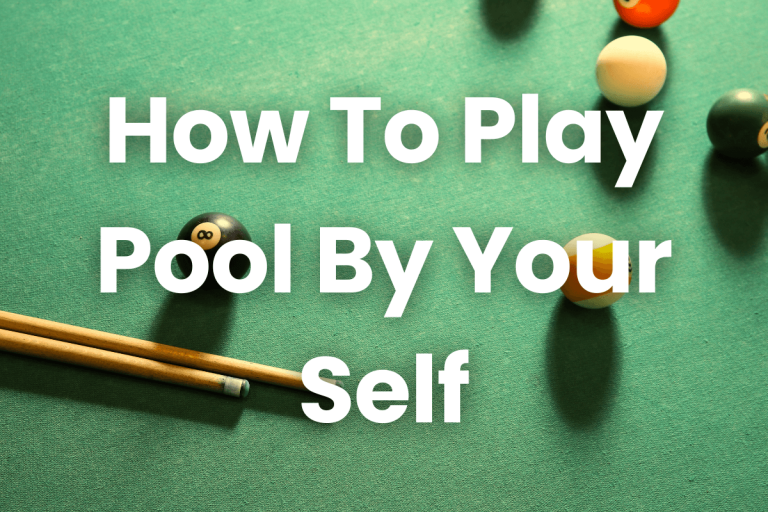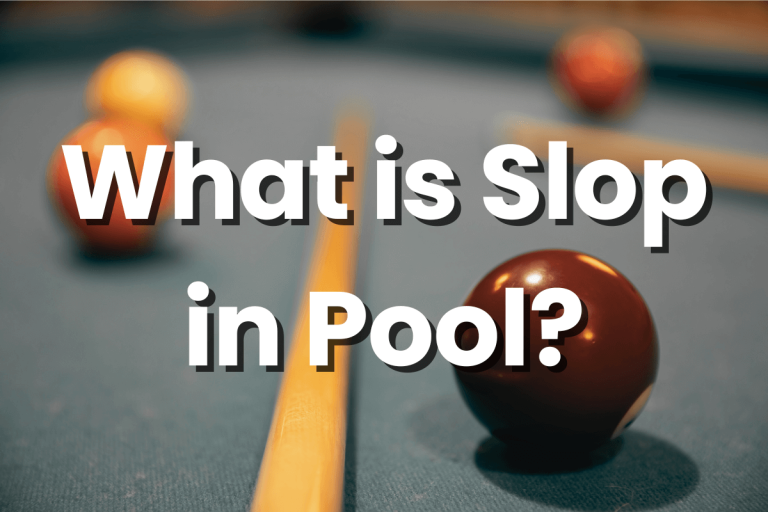Master Jump Shot in Pool | A Guide to Elevate Your Game (2024)
Welcome to the thrilling world of pool, where mastering the jump shot in pool can be your game-changer! Imagine effortlessly clearing obstacles on the table, like a skilled archer shooting over a wall. This isn’t just a show-off move; it’s a strategic masterpiece in pool games. Jump shots, executed by launching the cue ball into the air to leap over another ball, aren’t just about flair – they’re about outsmarting your opponent and turning the tide in your favor. Get ready to leap into action and transform your pool game!
Understanding the Basics of Jump Shots
Alright, let’s break it down. In the world of pool, a jump shot is a spectacular move where you hit the cue ball in such a way that it literally jumps off the table surface, soaring over any obstructing balls. It’s like giving your cue ball its own set of wings to fly over obstacles!
Now, you might wonder, how does this even work? It’s all about the physics. When you strike the cue ball at a lower angle with a swift, downward cue action, you create a compression effect on the cloth and cushioning of the pool table. This forceful but precise impact propels the ball into the air. Think of it as a mini rocket launch, where your cue stick is the launchpad, and the cue ball is your rocket!
But why bother with a jump shot? In games like eight-ball or nine-ball, sometimes your direct path to the target ball is blocked by other balls. You can’t just bulldoze through them – that’s a foul. Enter the jump shot. It’s your clever, rule-abiding way to bypass these obstacles, keeping your turn alive and setting up for your next move.
Essential Equipment for Jump Shots
Choosing the Right Cue
Standard Pool Cues: Good for general play, but not optimized for jump shots.
Specialized Jump Cues: Designed specifically for jump shots. They’re lighter, and shorter, with a harder tip, making them the go-to for high-flying action.
The Importance of Cue Ball Selection
Weight and Size: Just like in bowling, the right weight and size matter. A properly balanced cue ball can significantly impact the success of your jump shots.
The Pool Table Surface
Quality Matters: A well-maintained table with the right cloth can make or break your jump shot. You’re looking for a smooth surface that offers enough grip for control.
Accessories for the Perfect Shot
Chalk and Gloves: The right chalk can enhance grip, reducing miscues. Gloves can also aid in achieving a smoother, more controlled stroke.
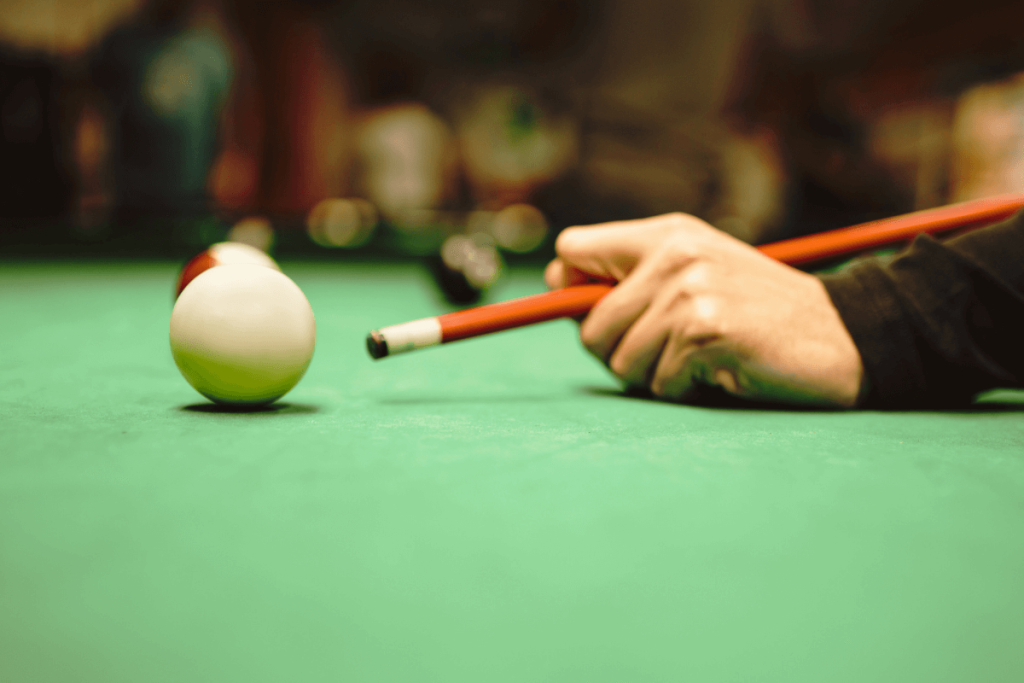
Preparing for the Jump Shot
Stance and Positioning
Finding Your Footing: Position your feet shoulder-width apart for balance. The foot closest to the table should be slightly forward.
Body Alignment: Lean slightly forward, aligning your head and cue with the target. This stance maximizes stability and precision.
Cue Grip and Arm Positioning
The Grip: Hold your cue lightly but firmly. Too tight, and you’ll lose flexibility; too loose, and you’ll lose control.
Arm Dynamics: Keep your forearm perpendicular to the cue at the moment of striking. This ensures a powerful, controlled thrust.
Eye Focus and Mental Preparation
Visualize the Shot: Before you strike, take a moment to picture the cue ball’s path. Visualization is key to executing a successful jump shot.
Concentration: Maintain focus on both the cue ball and your target. A calm, focused mind will increase your accuracy.
Jump Shot in Pool: Step-by-Step Instructions
The Jump Shot Technique
Position the Cue: Aim the tip of your cue slightly below the center of the cue ball.
Striking the Ball: Use a swift, downward stroke. The key is to hit the cue ball lower than its equator, causing it to jump.
Follow Through: Ensure a smooth follow-through. Your cue should move along the line of the shot even after contact.
Common Mistakes to Avoid in Jump Shot
Overpowering the Shot: Too much force can send the ball off the table or result in a loss of control.
Incorrect Cue Positioning: Striking too high or too low on the cue ball can lead to an unsuccessful jump or a miscue.
Neglecting Stance and Grip: A shaky stance or improper grip can ruin the precision of your shot.
Adjusting Power and Angle in Jump Shot
Power Adjustment: The distance of the jump and the required height will dictate the power needed. Practice different levels of force.
Angle Considerations: Adjust the angle of your cue for different obstacles. A steeper angle for high jumps, and a more shallow angle for longer, low jumps.
Practice Variations: Experiment with different cue ball positions and obstacles to master control in various scenarios.
Advanced Techniques and Tricks for Jump Shots
Adding Spin to a Jump Shot
Spin Basics: To add spin, strike the cue ball off-center. Right for a right spin, left for a left spin.
Precision in Strike: The key is a delicate balance between the jump and the spin. It requires a precise strike, combining both the vertical force of a jump shot and the lateral force for the spin.
Practice Makes Perfect: Start with small adjustments to find the sweet spot for adding spin without compromising the jump.
Mastering Jump and Bank Shots Combination
Understanding Angles: Familiarize yourself with the angles of bank shots. A jump shot combined with a bank requires precise calculation.
The Double Challenge: Practice the jump shot and bank shot separately, then gradually combine them. It’s about synchronizing the jump’s height with the bank’s angle.
Controlled Power: The power behind the shot affects both the jump and the bank. Fine-tune your force to manage both aspects.
Jumping Over Multiple Balls
Elevate Your Cue: Increase the angle of your cue for higher jumps. This is crucial when clearing multiple balls.
Striking Point: Aim for a lower point on the cue ball to achieve greater height.
Consistent Practice: Set up multiple balls and practice jumping over them. Gradually increase the number as you improve.
Common Challenges and Solutions in Executing Jump Shots
Challenge: Inconsistent Jump Height
Solution: Adjust your strike point on the cue ball. Striking too low or too high can affect the jump height. Practice finding the sweet spot just below the center.
Expert Tip: Use a consistent and controlled stroke. Consistency in your cue action is key to managing jump height.
Challenge: Losing Control of the Cue Ball
Solution: Focus on your follow-through. A complete and smooth follow-through ensures better control over the cue ball’s direction and speed.
Expert Tip: Practice shorter jumps first. Gain control over shorter distances before attempting longer, more complex jumps.
Challenge: Difficulty in Clearing Obstacles
Solution: Increase the angle of your cue. For higher jumps, you need a steeper angle. Adjust your body and cue position accordingly.
Expert Tip: Set up practice drills with varying obstacle heights and distances. This helps build skill in clearing different types of obstacles.
Challenge: Cue Ball Going Off the Table
Solution: Reduce the power of your strike. Too much force can send the ball flying off the table. Find the right balance between force and control.
Expert Tip: Pay attention to the weight and balance of your cue. A cue that’s well-suited to your style can make a significant difference.
Challenge: Difficulty in Adding Spin
Solution: Work on striking the cue ball at the correct off-center point. The spin depends on where and how you hit the ball.
Expert Tip: Start with minimal spin and gradually increase as you get comfortable. It’s all about incremental improvements.
Conclusion
We’ve journeyed through the art of the jump shot, from the basics to advanced maneuvers. Remember, the key to mastering these shots lies in practice and patience. Experiment with different cues, angles, and techniques. Embrace each challenge as a step towards improvement. Stay dedicated, keep practicing, and most importantly, enjoy every moment at the table. With time and perseverance, you’ll be making those jaw-dropping jump shots and wowing your opponents. Here’s to your journey to becoming a jump shot maestro in the pool!
FAQs
Can jump shots be performed with any cue?
Jump shots can technically be performed with any cue, but specialized jump cues are designed specifically for this purpose, featuring a shorter length and harder tip for better control and elevation. While it’s possible to execute jump shots with a standard cue, using a jump cue enhances accuracy and makes the shot easier to execute, especially for advanced jump shots requiring precise cue ball elevation.
How long does it take to master a jump shot?
The time it takes to master a jump shot varies depending on individual skill level, practice frequency, and dedication. Some players may achieve proficiency in a few weeks with consistent practice, while others may take several months to refine their technique and achieve consistent accuracy. Regular practice, patience, and focus on proper technique are key factors in mastering the jump shot.
Are jump shots legal in all pool games?
Jump shots are legal in most pool games, but it’s always best to check the specific rules of the game you’re playing.
What’s the best way to practice jump shots?
Start with basic jumps over small obstacles, gradually increasing complexity. Consistent, focused practice is key.
Is it necessary to use chalk on the cue tip for jump shots?
Yes, chalking the cue tip is essential for jump shots. It helps prevent miscues by increasing friction between the cue tip and the cue ball, ensuring a more controlled and precise shot.
How do I adjust my jump shot technique for different table sizes?
The size of the table can affect the power and angle needed for a successful jump shot. On larger tables, you may need to strike with more force to cover longer distances. Conversely, on smaller tables, precision, and control become even more crucial to avoid excessive jump heights or distances. Practicing on different-sized tables can help you adapt your technique accordingly.

